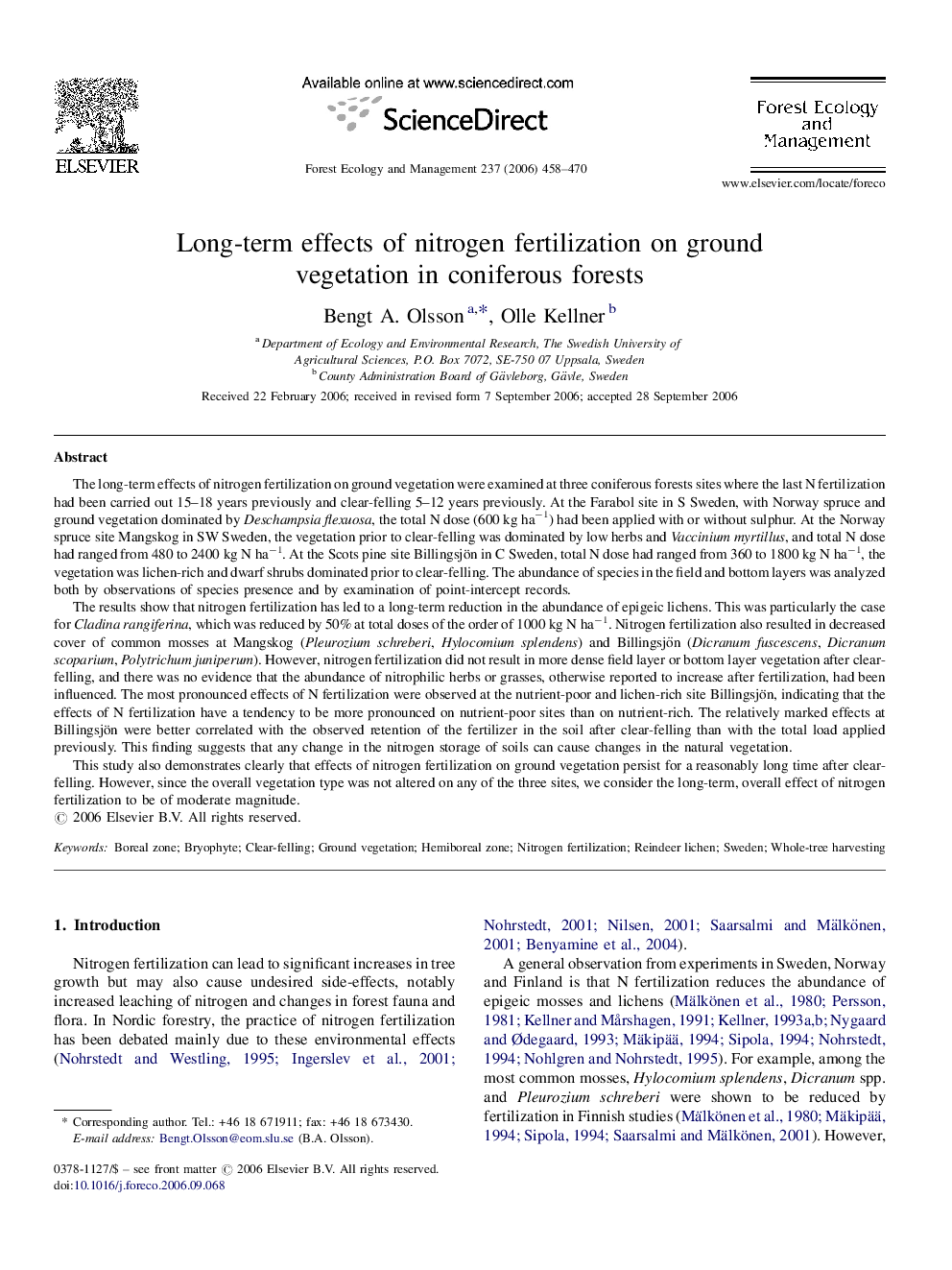| کد مقاله | کد نشریه | سال انتشار | مقاله انگلیسی | نسخه تمام متن |
|---|---|---|---|---|
| 89976 | 159360 | 2006 | 13 صفحه PDF | دانلود رایگان |

The long-term effects of nitrogen fertilization on ground vegetation were examined at three coniferous forests sites where the last N fertilization had been carried out 15–18 years previously and clear-felling 5–12 years previously. At the Farabol site in S Sweden, with Norway spruce and ground vegetation dominated by Deschampsia flexuosa, the total N dose (600 kg ha−1) had been applied with or without sulphur. At the Norway spruce site Mangskog in SW Sweden, the vegetation prior to clear-felling was dominated by low herbs and Vaccinium myrtillus, and total N dose had ranged from 480 to 2400 kg N ha−1. At the Scots pine site Billingsjön in C Sweden, total N dose had ranged from 360 to 1800 kg N ha−1, the vegetation was lichen-rich and dwarf shrubs dominated prior to clear-felling. The abundance of species in the field and bottom layers was analyzed both by observations of species presence and by examination of point-intercept records.The results show that nitrogen fertilization has led to a long-term reduction in the abundance of epigeic lichens. This was particularly the case for Cladina rangiferina, which was reduced by 50% at total doses of the order of 1000 kg N ha−1. Nitrogen fertilization also resulted in decreased cover of common mosses at Mangskog (Pleurozium schreberi, Hylocomium splendens) and Billingsjön (Dicranum fuscescens, Dicranum scoparium, Polytrichum juniperum). However, nitrogen fertilization did not result in more dense field layer or bottom layer vegetation after clear-felling, and there was no evidence that the abundance of nitrophilic herbs or grasses, otherwise reported to increase after fertilization, had been influenced. The most pronounced effects of N fertilization were observed at the nutrient-poor and lichen-rich site Billingsjön, indicating that the effects of N fertilization have a tendency to be more pronounced on nutrient-poor sites than on nutrient-rich. The relatively marked effects at Billingsjön were better correlated with the observed retention of the fertilizer in the soil after clear-felling than with the total load applied previously. This finding suggests that any change in the nitrogen storage of soils can cause changes in the natural vegetation.This study also demonstrates clearly that effects of nitrogen fertilization on ground vegetation persist for a reasonably long time after clear-felling. However, since the overall vegetation type was not altered on any of the three sites, we consider the long-term, overall effect of nitrogen fertilization to be of moderate magnitude.
Journal: Forest Ecology and Management - Volume 237, Issues 1–3, 15 December 2006, Pages 458–470